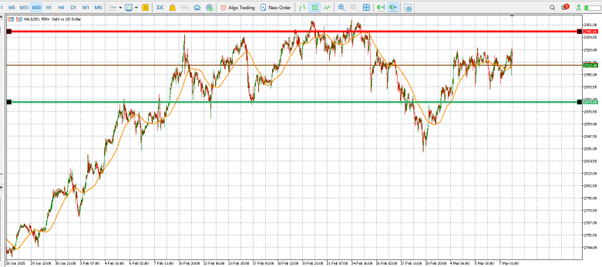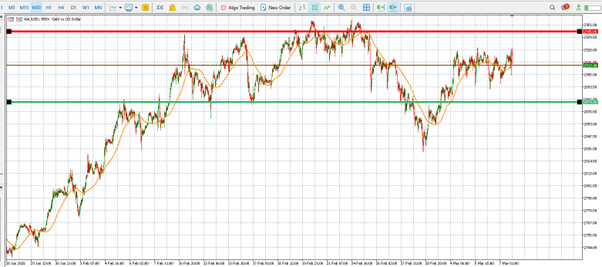Gold prices have experienced notable fluctuations in response to the latest U.S. Non-Farm Payrolls (NFP) data released today. As of March 7, 2025, gold is trading at approximately $2,921.19 per ounce, reflecting an increase of over 11% year-to-date. This surge underscores gold's enduring appeal as a safe-haven asset amid global economic uncertainties.
February's NFP Data: A Closer Look
The U.S. economy added 151,000 jobs in February, falling short of the anticipated 170,000. This marks a slight improvement from January's 143,000 jobs but still indicates a slowdown in employment growth. Additionally, the unemployment rate edged up to 4.1% from the previous month's 4.0%.
Sectors such as retail and professional services experienced job declines, while annual hourly wages saw an uptick, surpassing pre-pandemic rates. These mixed signals have led to increased speculation regarding the Federal Reserve's monetary policy trajectory. Following the NFP release, traders have adjusted their expectations, now assigning a 58.7% probability to a quarter-point rate cut by June, up from 47.5% prior to the data.
Impact on Gold Prices
Gold's price dynamics are intricately linked to U.S. economic indicators, with the NFP report being particularly influential. The weaker-than-expected job growth has bolstered gold prices due to several factors:
- Federal Reserve Rate Cut Speculations: Subdued employment figures heighten the likelihood of the Federal Reserve implementing rate cuts to stimulate economic activity. Lower interest rates diminish the opportunity cost of holding non-yielding assets like gold, thereby enhancing its attractiveness to investors.
- Safe-Haven Demand: The uptick in unemployment and sluggish job creation amplify concerns about the U.S. economic outlook. This uncertainty drives investors toward safe-haven assets, with gold being a primary beneficiary.
- Dollar Depreciation: Expectations of potential rate cuts can lead to a weaker U.S. dollar. Since gold is dollar-denominated, a softer dollar makes gold more affordable for holders of other currencies, thereby boosting demand.
Market Sentiment and Future Outlook
The current market sentiment is characterized by caution, as investors digest the implications of the latest employment data. Federal Reserve Chair Jerome Powell is scheduled to speak later today, and his remarks are anticipated to provide further insights into the central bank's policy direction. Any indications of a dovish stance could propel gold prices higher.
Looking ahead, several factors could influence gold's trajectory:
- Inflation Trends: Should inflationary pressures persist, gold may continue to serve as an effective hedge, sustaining its demand.
- Geopolitical Developments: Ongoing global trade tensions and geopolitical uncertainties can further elevate gold's appeal as a safe-haven asset.
- Economic Data Releases: Upcoming economic indicators, including consumer spending and manufacturing data, will be pivotal in shaping investor expectations and, consequently, gold prices.
Technical Level
The price of the yellow metal has fluctuated violently today but now it seems that traders are one again focus on the main levels which are show in the chart. A break of any of these levels will determine the next trend.

MT4 chart by AvaTrade
In conclusion, the recent NFP data has reinforced gold's status as a refuge amid economic ambiguity. Investors are advised to monitor forthcoming economic releases and Federal Reserve communications closely, as these will play critical roles in determining gold's future performance.
